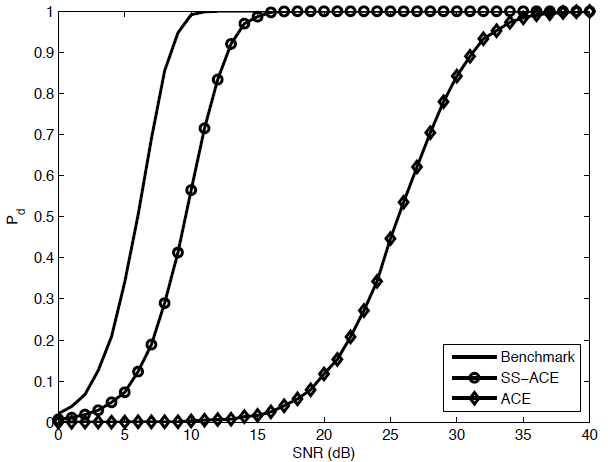
The problem of detecting a multichannel signal buried in temporally and spatially correlated disturbance (clutter plus noise) has been extensively researched in phased-array radar or sonar. Yet, realistic scenarios are often non-homogeneous (non-uniform in composition or character) because of environmental effects and system aspects, which drastically reduces the number of homogeneous secondary data and results in significant degradation in detection performance.
Recently, researchers HAO Chengpeng and HOU Chaohuan from the Institute of Acoustics of the Chinese Academy of Sciences work together with Italian scientists Orlando Danilo, Farina Alfonso and Iommelli Salvatore to have taken into account the partially homogeneous environment. They use the symmetric spectrum property for multichannel signal detection, which shows superiority compared with the traditional state-of-the-art counterpart.
As for the symmetry in the clutter spectral characteristics, it would reduce the number of nuisance parameters to estimate. In fact, it is well-known that ground clutter observed by a stationary monostatic radar often exhibits a symmetric power spectral density centered around the zero-Doppler frequency and whose integral (clutter power) depends on the type of illuminated background. This symmetry property was firstly exploited in a previously published paper “Adaptive Detection of Point-Like Targets in Spectrally Symmetric Interference” (Antonio De Maio, Orlando Danilo, HAO Chengpeng, and Foglia Goffredo, IEEE Transactions on Signal Processing, Vol.64, No.12, June 2016, pp. 3207-3220).
In current research, the primary data and the secondary data share the same covariance matrix up to an unknown power scaling factor. One motivation to consider the partially homogeneous model is due to the use of guard cells in radar signal processing, which may lead to a power difference between the primary data and the secondary data.
Moreover, at the design stage, the researchers exploit the symmetric spectral property of the disturbance to transfer the binary hypothesis testing problem from the complex to the real domain. As well, they derive an adaptive detector relying on the two-step Generalized Likelihood Ratio Test design procedure.
A preliminary performance assessment, conducted by Monte Carlo simulation which is a broad class of computational algorithms that rely on repeated random sampling to obtain numerical results, has confirmed the effectiveness of the newly proposed detector. Compared with the conventional counterpart of the Adaptive Coherence Estimator (ACE) which ignores the symmetric spectral property, the newly proposed detector of Symmetric Spectrum ACE (SS-ACE) shows superiority, as shown in Fig. 1.
Funding for this research came from the National Natural Science Foundation of China under Contracts 61172166 and 61571434.

Fig. 1 Pd (Probability of Detection) versus signal-to-noise ratio (SNR) (Image by HAO Chengpeng et al.)

86-10-68597521 (day)
86-10-68597289 (night)

52 Sanlihe Rd., Xicheng District,
Beijing, China (100864)

